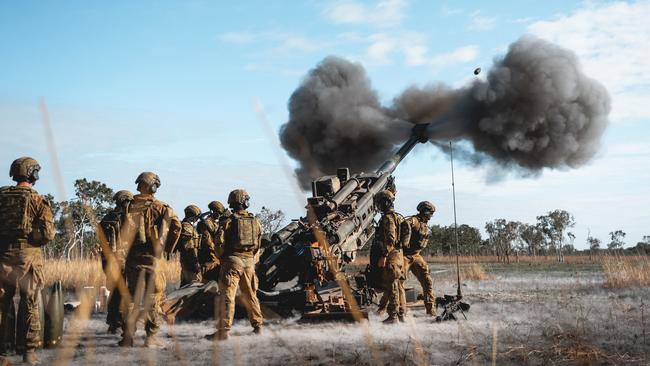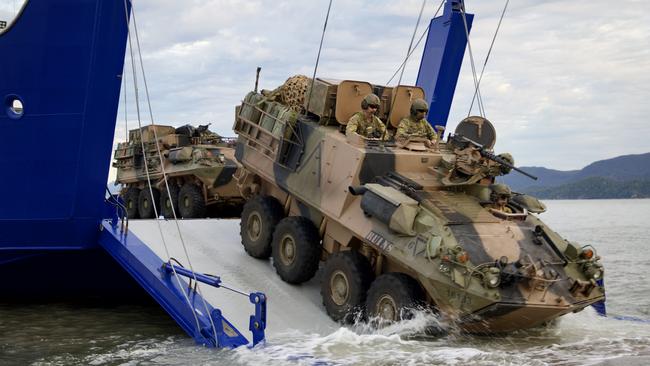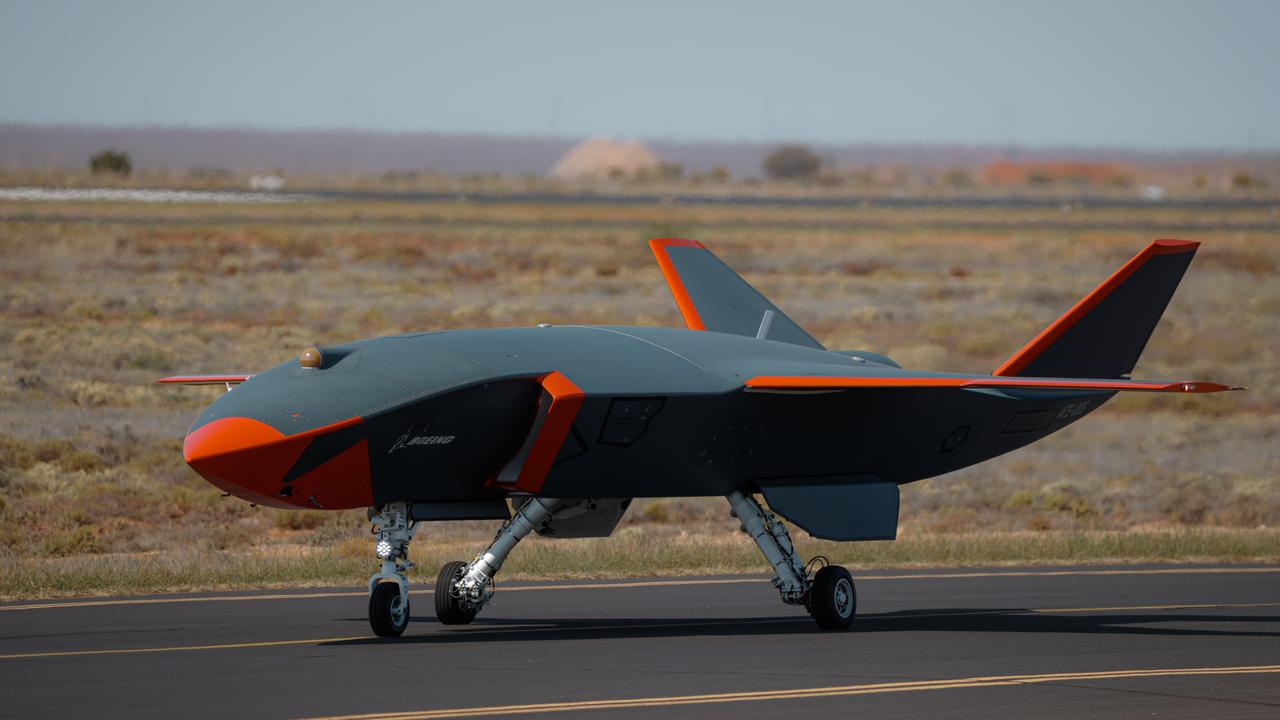Army’s continual adaptation mindset
Chief of Army on restructuring the force in response to requirements of the Defence Strategic Review

The Australian Army is undergoing one of the most significant restructures in its 123-year history as it reshapes from a “balanced” into a “focused” force to meet future threats.
Until recently, under the army’s then current Plan Beersheba, the service was structured as a balanced force, whereby its combat capability was distributed more or less equally between three fighting brigades, with one of them committed to operations at any given time. This was known as the Ready, Readying, Reset cycle – a process largely driven by the army’s regular rotations to the Middle East earlier in the century.
However, the Albanese government’s Defence Strategic Review, released in April 2023, called for a significant shift in the force in being, saying that the “balanced force” model no longer addressed the strategic environment Australia found itself in. The DSR called for a force that can be focused to respond to the wide variety of risks potentially faced by the country.
From the army’s perspective, the future defence blueprint called for a “fully enabled, amphibious capable, combined arms land system”, a “joint expeditionary theatre logistics system with strategic depth and mobility”, and a “theatre command and control framework that enables an enhanced integrated force”.
Furthermore, it called for a littoral manoeuvre capability by land, sea and air; a long-range fires capability which also includes land-based maritime strike; an integrated air and missile defence (IAMDS) capability, and the formation of a single armoured combined arms brigade able to meet the most demanding challenges Australia is likely to face in the region.
The result would be, according to the DSR, “significant changes” to the force posture and structure of the army, which meant some of the elements of the service needed to be re-roled and more of its capabilities focused in northern Australia.

“When I joined the army in 1987, it was the year of the Defence of Australia White Paper (and) that policy document has largely shaped my entire career,” Chief of Army Lieutenant General Simon Stuart explained.
“I would describe the Defence Strategic Review as being of similar weight and gravity and it will certainly influence the careers of those who are joining us today.”
In terms of capability, some of the equipment needed to reshape the army was already being acquired by the time of the DSR’s release – including new attack and battlefield transport helicopters, new main battle tanks, combat reconnaissance and infantry fighting vehicles, and self-propelled howitzers. However, new focuses such as littoral manoeuvre and long-range fires have resulted in a re-prioritisation of many of the army’s acquisition programs and the creation of others. Lieutenant General Stuart noted that significant progress has already been made on the journey, just 16 months after the release of the DSR.
“In that very short 16 months, the army has achieved a huge amount, because speed to effect matters,” he said.
“Effectively, we’ve completely changed our approach. Change implies moving from one set of stable, comfortable circumstances, through a period of turbulence, to another set of stable circumstances. That does not reflect the world we live in and we will take a continual adaptation mindset – with all the discomfort that brings.”
From a tactics and doctrine perspective, Lieutenant General Stuart said the army had “completely rewritten” its land domain operating concept, while updating its doctrine and tactics, techniques and procedures along the way.
“We need a much faster loop and a closer relationship between the ever-changing TTPs and our doctrine and concepts,” he explained.
“That is a task for all our formations and units, but we’ve also taken an organisational approach to that by re-roling the 1st Armoured Regiment into an innovation and experimentation unit – which is going to learn quickly by doing, failing fast, and then transferring that experience and knowledge into our combat formations.”
The physical restructuring of the army includes a return to the division as the so-called “unit of action”, rather than the subordinate brigades, which had been the case under Plan Beersheba. In essence, the army will be structured into two combat divisions, each of which has a number of optimised brigades.
The 1st (Australian) Division, headquartered in Brisbane, will oversee the 1st Brigade in Darwin, which will be a light combat force; 3rd Brigade in Townsville will be an armoured and amphibious combat force; the 7th Brigade in Brisbane will become a motorised combat force; and finally, the newly created 10th Brigade in Adelaide will be responsible for the army’s long range fires and air defence capability. The latter includes the soon to be delivered Lockheed Martin M142 HIMARS (High Mobility Artillery Rocket System) currently on order. All of these brigades will be optimised for littoral manoeuvre operations.
The 2nd (Australian) Division will oversee the army’s reserve units, including the Victoria/Tasmania-based 4th Brigade; the 5th Brigade (NSW); 9th Brigade (South Australia), 11th Brigade (Queensland); and the 13th Brigade (Western Australia). Each of these divisions will be supported as required by a newly invigorated Army Aviation Command, based around the Boeing AH-64E Apache Guardian attack helicopter, Sikorsky UH-60M battlefield lift helicopter and the Boeing CH-47F Chinook medium lift rotorcraft.
Of the newly refocused 3rd Brigade, Lieutenant General Stuart describes it as the best close combat capability the army has had since the service was created in 1901. “It can work aggregated or disaggregated and that brigade will be paired with a littoral manoeuvre group that will operate out of north Queensland,” he said. “The idea is to be able to project force and to manoeuvre in the littorals.”
It is this shift to a littoral manoeuvre capability that will arguably bring about the largest change in the way the army conducts operations in the future.
One of the priorities stemming from the DSR has been the creation of Project Land 8710, which will oversee the acquisition of both landing craft and amphibious vehicles to revive a capability largely lost at the end of World War II.
The first of these new capabilities to enter service will be 18 Landing Craft – Medium (LCM) vessels, designed by Birdon and constructed at Henderson in Western Australia by Austal under Phase 1A of Land 8710. As a priority acquisition program, the first of these landing craft could be delivered as early as 2026. The 18 new vessels will be almost three times the size and double the weight of the 15 older LCM-8 landing craft they are set to replace.

Even more impressive will be the subsequent acquisition of a number of larger vessels, the Landing Craft – Heavy (LCH) which will be capable of transporting between 500 and 600 tonnes of equipment over long distances – something the army hasn’t been able to do since World War II.
The fleet will be capable of operating in conjunction with the Royal Australian Navy’s much larger amphibious warfare vessels during littoral operations.
“There is a paucity of smaller fleet units in the navy and so the beauty of the army’s littoral manoeuvre is that it can operate in conjunction with the amphibious system, or it can operate in a very dispersed nature – with small teams which have increased lethality, protection and survivability,” Lieutenant General Stuart said. Another of the DSR’s recommendations was that the army’s Command and Control (C2) systems must align with those of the broader ADF and its allies, to create an integrated C2 system at theatre level.
“We have completely reorganised Army’s Command and Control to align with theatre command and better and more smoothly enable us to force generate and assign forces for the Chief of Joint Operations (CJOPS) to prosecute the theatre campaign plan,” Lieutenant General Stuart reported. “And we’ve effectively recreated the division as the unit of action – 1st Division, 2nd Division and Special Operations Command as our key operational outputs, supported by Army Aviation.”
To enable the force generation required for combat operations, the army’s Forces Command has taken a new approach by creating an Army Training Enterprise.
“We use the full surface of Army for both individual and collective training and we’ve re- imagined the way our Combat Training Centre does this work,” Lieutenant General Stuart added.
“Previously, if you were a battle group or a brigade commander, you took your callsign to the CTC to be trained. Now the CTC provides full mission profile training, a realistic training environment, and the commanders take their formation and train them themselves.”
Looking to the future, Lieutenant General Stuart noted that technology was changing at a rapid pace and the application of data and analytics to the business of the army would allow commanders to make better use of available resources, enable them to have a better understanding of what is working and what isn’t, and have a keener understanding of risk and performance.
This rapidly changing pace of technology also means the army must embrace innovation to generate a technological offset, given its modest size. “We need to make up for our lack of mass and scale and understand the consistent cycle of action, reaction and counteraction, in terms of our strike and shield functions,” Lieutenant General Stuart added.
Finally, in terms of the implementation of the DSR’s recommendations, he said the change from a balanced to a focused force would ensure the army’s contribution to the integrated force, as well as to that of Australia’s allies and partners.
“We’ve changed entirely our approach to readiness – to one where we are building readiness while we are deployed on operations, exercises and activities around the region,” Lieutenant General Stuart concluded, adding: “That’s working really well.”



To join the conversation, please log in. Don't have an account? Register
Join the conversation, you are commenting as Logout